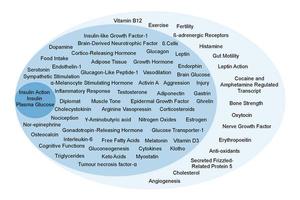August 7, 2017
In a provocative piece of research,scientists in a Pune-based institute used computer simulation to show that the current treatment modalities are not the best for type 2 diabetes and a change in approach could make the nasty disease one of the curable.
The scientists led by evolutionary biologist Milind Watve at the Indian Institute of Science (IISER) Pune, created a computer model by putting together for the first time all known metabolic, hormonal, neuronal, immunological and behavioural signals involved in the onset of diabetes and in its manifestation in the human body.
Network model:
To construct the network model, Watve’s team scoured nearly 500 published papers. This helped them identify as many 330 different interactions — involving over 70 molecules or signals — associated with diabetes. “Glucose and insulin are just two of them,” Watve told.
“The network is like a giant cobweb in which perturbing one thread perturbs the entire network,” said Shubhankar Kulkarni, Watve’s PhD student and first author of the paper,which appeared in the journal PLOS One last week. Significantly, even though the effects are complex, they are far from being chaotic, he said. The IISER scientists, to their surprise, found that the network is highly structured and with any perturbation it ends up in either of the two possible configurations – one is insulin-sensitive and the other insulin-resistant. Using the model, the researchers could not only mimic many known patterns and processes associated with diabetes, but could also make a number of surprising predictions, the remarkable one being that diabetes can be completely reversed. CS Yajnik,who heads the Diabetes Unit at the King Edward Memorial Hospital and Research Centre in Pune,said it’s a commendable piece of theoretical work.But one cannot be sure of its clinical significance unless proven in experiments,he said.
Large-scale clinical trials in the last few decades have shown that normalisation of glucose is not sufficient to arrest all diabetes related complications.In some cases, the death rate actually increased after aggressive normalisation,the researchers said.
More importantly, the scientists said the complex computer model showed that increased blood sugar is not central to abnormal changes in diabetes and, therefore, controlling sugar was ineffective in reversing the condition.Increased blood sugar is only a symptom,not the root cause.Treating symptoms is not sufficient to reverse the condition, said Watve. Yajnik, however, disagreed.He said clinicians rely on regulating glucose and insulin as they have been able to improve the quality of life of the diabetics world over.
They continue to be the principal targets as far as diabetes is concerned as they are easy to be manipulated and results can readily be quantified.
In the prevalent clinical practice, diabetes is considered to be irreversible.But, according to the IISER network model, not a single step in the known pathophysiology is irreversible.“What is becoming evident from our theoretical work is that diabetes can be cured in the long-term,but not by targeting glucose and insulin”,Watve said.Another interesting take-home message that came through this study is that behavioural exercises have better impact on maintaining healthy blood sugar levels than calorie-burning, mechanical exercises.“Running or jogging is just an exercise that burns your calories, but chasing a target or partaking in a competitive sport is more than calorie-burning as it stimulates the neuro-endocrine circuitry,and thus helps improve hormonal balance which is also seen seriously impaired in diabetic patients.
Source:WhatsApp

